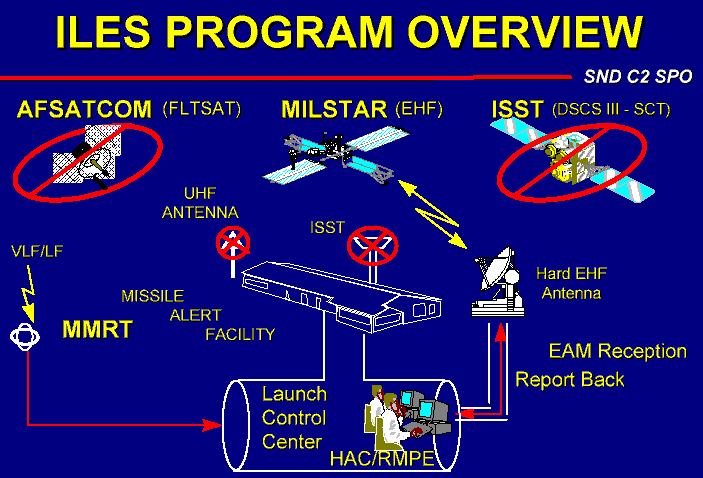



ICBM Launch Control Centers (LCC) Communications
The National Security Strategy requires the United States (US) to maintain sufficient nuclear forces to deter any future foreign leadership with access to strategic nuclear forces from acting against American vital national interests, and to convince such leadership that seeking a nuclear advantage would be futile. Survivable communications are an integral part of US deterrence strategy because potential adversaries must be convinced that launch orders could actually be transmitted to, and received by, the Launch Control Centers (LCC) when required.
The Intercontinental Ballistic Missile (ICBM) Super High Frequency Satellite Terminal (ISST) was fielded as an interim system in 1990. ISST uses the Single Channel Transponder (SCT) package (SCTs) on the Defense Satellite Communication System (DSCS). This becomes unsupportable beyond 2003. The DSCS SCT system is not planned to be capable of support to strategic communications beyond 2003.
ICBM Launch Control Centers (LCC) EHF/VLF/LF System [ILES] program will integrate an EHF/VLF/LF system(s) into the Minuteman Intercontinental Ballistic Missile (ICBM) Launch Control Centers (LCCs). As the newest links in the Minimum Essential Emergency Communications Network (MEECN), this effort will provide the LCCs with the ability to
receive Emergency Action Messages (EAMs) and send force reportback messages (EHF) over the MILSTAR network. The ILES EHF/VLF/LF system(s) will provide secure, survivable, and reliable
communication between the National Command Authority (NCA) and the LCCs. The modified EHF
terminal will replace the existing ICBM Super High Frequency Satellite Terminal (ISST) and
AFSATCOM reportback. The ILES VLF/LF will replace the Survivable Low Frequency Communication System (SLFCS).
Strategic systems will transition to the EHF spectrum to assure continued survivable command and control of nuclear forces. USSTRATCOM needs a replacement for this system that will ensure reliable, secure, and survivable communications are
maintained between the National Command Authority (NCA) and the Intercontinental Ballistic Missile (ICBM) LCCs. Strategic systems will transition to the EHF spectrum to assure continued survivable command and control of nuclear forces. The new ICBM EHF system will be compatible with the REACT console system for receipt of all ICBM EHF system status, fault status, EAMs and associated alarms and transmission of force report- back messages. The below grade portion of the ICBM EHF system located in the Launch Control Center (LCC) and/or the Launch Control Equipment Building (LCEB) is designed to survive and operate without damage/degradation or loss of EAM reception commensurate with the above grade portion of the EHF system including the EMP portion of a nuclear event anticipated for the ICBM weapon system.
The new ICBM VLF/LF system is needed to support the JCS HIDAR communications capabilities which have been designated for future implementations In Accordance With
(IAW) CJCS Memorandum, dated 30 August 91. Improved VLF/LF communications remain a key to
providing survivable communications to strategic nuclear forces. Additionally, the current 616A VLF/LF receivers are outdated and cannot be modified to incorporate the HIDAR mode. The DoD Appropriation Bill, 1995, directed the Modified Miniature Receive Terminal (MMRT) be developed and installed in the Air Force E-4B and Navy E-6B aircraft. Additionally, the Office of the Secretary of Defense (OSD) has approved MMRT for use in the ICBM LCCs.

Sources and Resources
http://www.fas.org/nuke/guide/usa/c3i/icbm-lcc.htm
Maintained by Webmaster
Updated Thursday, December 03, 1998 8:38:34 AM







